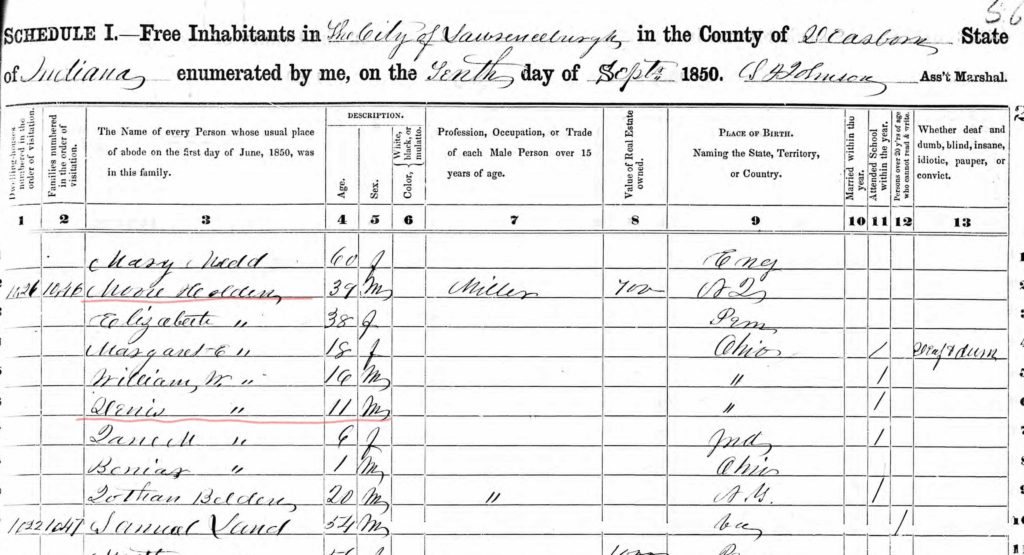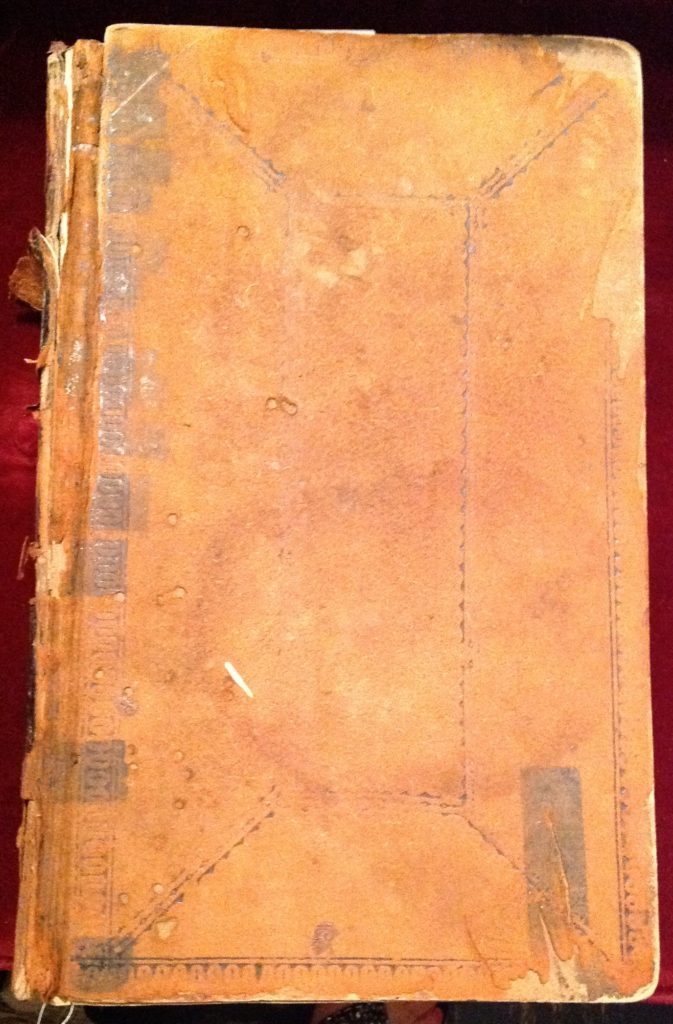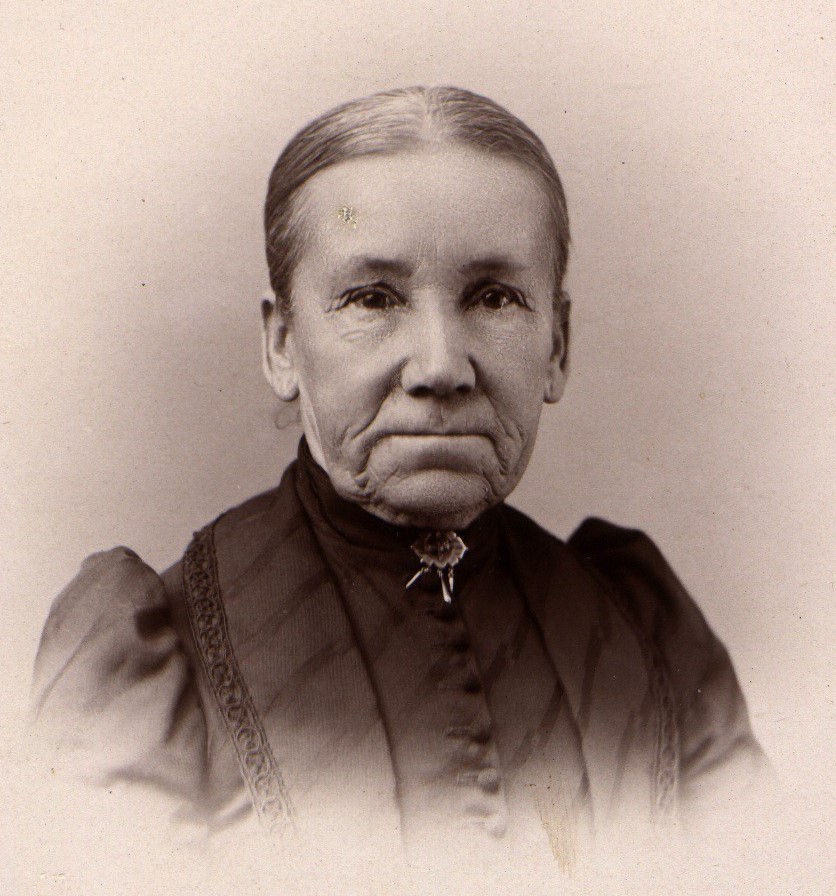52 Ancestors – Disaster
The story of my 2nd great grandparents, Dennis Holden and Phoebe Clark, of Lawrenceburg, Dearborn County, Indiana, and their children is a tragic one.
Dennis and Phoebe married 1860 in Lawrenceburg, where they lived for a time, their first child being born there. Dennis, a miller, found work at the P. Lamb and Co. Distillery in Lafayette, Tippecanoe County, Indiana, where the next child (and probably the third) was born. By 1870 the family had moved to Sedamsville [now Cincinnati], Hamilton County, Ohio, where Dennis worked for yet another distillery.
Phoebe died, aged 35, 6 Dec 1876, in Sedamsville. Her obituary, 14 Dec 1876, read:
“Holden, Mrs. Dennis
“The remains of the wife of Dennis Holden were brought here [Lawrenceburg] for burial on Friday last, from Sedamsville. About nine days before her death, she gave birth to a child and never recovered her health. She leaves a husband and four or five children. [emphasis mine] She was a daughter of Hiram Clark of this place.”
Lawrenceburg (IN) Press, 14 Dec 1876, clipping from Lawrenceburg Public Library District.
Unable to care for his children, Dennis farmed them out; all but one found far and wide in the 1880 census:
- James “Clarence,” oldest child and my great grandfather, went to his mother’s sister in Cynthiana, Kentucky, where he met the woman who would become his wife and my great grandmother. Clarence was a barber who lived first in Cincinnati, and later, after his marriage, in Terre Haute, Indiana, where he died in 1944. His marriage to my great grandmother was a happy one until her early death at 46 years old.
- Edward Lafayette, the second son, whom I have not found in 1880, like his older brother, became a barber, first in Cincinnati and later in Terre Haute, dying there in 1908. He married late and it was not a happy marriage nor blessed with children.
- Harry, the third son, was sent to Dennis’s paternal aunt in Green Bay, Lee County, Iowa. He made his way back to the Cincinnati area in 1890, then to Terre Haute in 1896, and eventually to Los Angeles, California, where he died in 1939 alone after two failed marriages.
- Maude, born 1873, went to a Shaker village in Turtle Creek, outside Lebanon, Warren County, Ohio. By 1887 she lived with her brother Clarence in Terre Haute. Maude married in 1893 in Terre Haute, and with her husband, moved to Gary, Lake County, Indiana, where she died in 1950. Their marriage endured and one child was born.
- Elizabeth, born 27 Nov 1876 in Sedamsville, the fifth child, whose birth resulted in Phoebe’s death, was sent to Dennis’s first cousin, Omer Wiley, whose marriage was childless, in Jefferson Township, Switzerland County, Indiana, where she was raised as “Lou Wiley.” By 1896 Omer and family had moved to Cincinnati. Elizabeth had a succession of three husbands in fifteen years: the first whom she married in 1897, two years after their (and her only) child was born, and divorced by 1900; the second, whose name her child adopted, married in 1902 and divorced soon after; and the third (and final), married in 1915, Carl Geiser. Living first in Cincinnati, Elizabeth and Carl moved to Terre Haute in 1922, then Gary in 1927, and finally, in 1935, to Los Angeles where they died, she in 1949, he in 1950.
Dennis himself lived in 1880 as a boarder in Mount Jackson, just west of Indianapolis. He worked as a miller, possibly in a local distillery, where other boarders in the household worked. He did not remain there long. In 1882 while working at the distillery in Petersburg, Kentucky, just across the Ohio River from Lawrenceburg, Indiana, Dennis suffered a severe injury to his arm requiring amputation and ultimately causing his death from “lockjaw” [tetanus] on 7 April.
How traumatic it must have been for the children to have lost their mother at such young ages, then to have lost each other, and in a very short time to have lost their father. They were reunited, perhaps by the efforts of my great grandfather, each living, for a time, in Terre Haute where Clarence had made his home.
The search for and research of this family is another story. Many lessons learned along the way. To be told some other time…
Favorite Discovery
Week 7 of 52 Ancestors in 52 weeks and behind a couple of weeks but really wanted to post on this topic.
I have so many favorite discoveries but this one takes the serendipity cake!
My second great grandfather, Dennis Holden, was born about 1839 in Ohio. He was the son of Moore Holden but no record proved that relationship. In 1850 and 1860 he lived in Moore’s household in Lawrenceburg, Dearborn County, IN, but the relationship was not stated and those was the only times and records where the two were found together.
1850 US census, Dearborn County, Indiana, population schedule, Lawrenceburg, p. 285A (stamped), family 1046, Moore Holden household including Jotham Belden; digital images, Ancestry.com (http://www.ancestry.com : accessed 22 September 2014); citing NARA microfilm M432, roll 141.
Several years ago while in Lawrenceburg doing brick and mortar research on my Holden ancestors, I learned from the genealogy librarian that the man who performed the 1852 marriage for my 2g grandfather Dennis Holden’s sister Margaret and her husband (Jotham Belden, found in their household in 1850) was the minister of the ME Church across the street from the public library. The church, built in 1847, was still standing. She suggested that I visit its loft where “artifacts” were stored.
I almost didn’t; after all, what could possibly be there? And I had only a day and a half in Lawrenceburg. Luckily, I did call and set up a time to visit.
In the loft, I discovered several ME Church Record Books with entries as early as 1839.
 |
 |
Hamline Chapel, United Methodist Church (Lawrenceburg, Indiana), Record Book (1839-1886); privately held by Hamline Chapel, 102 W High St, Lawrenceburg, IN 47025. Note: On the upper part of the spine is “[Rec]ord,” and lower is “Methodist Church.” There is no title or copyright page. The first entry is dated 23 March 1839.
These Church Minutes contained almost no vital records BUT there was an 1844 entry for the baptisms of Margaret Eliza, William Weston and Dennis, “children of Moore Holden.” These were the three oldest children in the 1850 census.
Hamline Chapel, UM Church (Lawrenceburg, Indiana), Record Book (1839-1886), unnumbered pages, chronologically arranged, 29 June 1844, baptisms of Margaret, William and Dennis Holden, 30 June 1844.
This is the only record that proves kinship between them. There were no land, probate, court or vital records that link the two men.
Also among the treasures was a list of contributors to the church building fund that included Moore Holden.

List of persons who pledged money for the building of the ME Church, 2 March 1846, [original manuscript framed under glass], Hamline Chapel, Lawrenceburg, Indiana.
Included are Moore Holden, Cyrus Clark (a fourth great grandfather, and grandfather of Dennis’s wife), and Joseph Groff, husband of Moore’s sister.
Proving kinship in early records is always a challenge especially when records don’t exist or contain no information. We always hope to find that lost or obscure source and rarely succeed.
This time it happened!
Why Genealogy?
There is so much more to a family than the begats. Our ancestors lived and breathed and toiled and carved out an existence that defined them. Why did your great grandfather come to America in 1863? Why did he settle in Kansas in 1871? My great grandfather, William Frank (Johann Andreas Wilhelm to be exact) left Germany for the United States in 1854. I don’t know why he left but I do know that he settled first in Marseilles, Ohio, and was a musician in the Civil War, and then homesteaded in Kansas in 1869. I have letters he wrote to his brothers and sisters while in the War and after arriving in Kansas. A person emerges, not a genealogy, not a history, but a real person. This is what family history is about, this is what we can leave to our children.
Don’t delay, ask all the questions you can think of of your elders. Gather all the papers, documents, Bibles, quilts, samplers, letters, pictures that you can. Take pictures, record histories. Talk to family members. Preserve your past, once it’s gone, it’s gone – unless you decide to record it for posterity.
Merging Trees on Ancestry.com
I will start by saying that I have been an Ancestry.com subscriber since they began and I think it is a wonderful resource.
BUT, as they say, Buyer Beware!
I am only speaking from experience and not about to point fingers! I only want to help others from making my mistakes. There are trees posted on ancestry.com (and elsewhere) that are well documented and are the result of many years labor in providing as accurate information as possible. But it takes practice and discretion to discover those trees or those parts of trees.
I had a genealogy web site on rootsweb.com many years ago. I posted my family tree with the information available at the time. I also posted photographs, notes, biographies and copies of documents.
The next thing I knew, my own images were coming back to me on ancestry.com as those little leaves. Someone had copied my information from my website and posted it to ancestry.com. Then what felt like hundreds of family trees had populated my information. I have tried to follow trails to see if the poster of the tree has any connection at all to me and rarely did I find one. Yet they have pictures of my grandparents and great grandparents. Can I say, “I feel violated?” Some of those images may even be copyright violations! And now sons are husbands and mothers are nieces, etc. Some families have 20-30 children since the merge feature in ancestry requires a little user input and obviously got none.
Okay, back to my original point. A hard-learned lesson, is to document everything from events to family members. What may seem obvious when reading a census from 1850-1870, the children in the household are the children of the head of household, may not be the case. It is not wise to assume. It’s good to have working hypotheses and to continue from there, but verify, verify and verify.
So back to ancestry.com family trees. You do no one, especially not yourself and your family, any favors by assuming what you have found in the trees is correct. In fact, you may increase your burden dramatically by accepting what you have found as fact.
BEFORE you decide to merge any information from another tree into yours, STOP!
- Review each individual, each event, each fact. Look for the supporting documents. Birth, death and marriage certificates are usually more accurate (not always) in determining the vital and relationship information than census records (or no sources at all). WWI and WWII registration cards will frequently have birth date and place information.
- Judge the records, don’t succumb to the temptation of completing your tree with inadequate data.
- Beware the “Coat of Arms”! Do a google search on Coats of Arms for your family name. Then pick another. Note the similarities. Most coats of arms were created for aristocracy and were individualized, at least in Great Britain. Otherwise it is just fluff, selling to the unwary buyer.
- Genealogies to the Kings and Queens of Europe – Much money was made selling genealogies to the public based on rich, landed, aristocratic ancestors. Many of these published genealogies are still being perpetuated.
And wait, if you think I am being high-handed, I too (or at least my great aunt) was conned. I received a picture of an ancestor in the files my grandmother had. It was printed and published along with a well-documented genealogy report recently. Letters and emails came rolling in. This was a picture of a U.S. President. All those years, my grandmother, great grandmother and great great aunt coveted this photograph and it wasn’t even their ancestor.
I offer a free 30 minute consultation. Please call or email me for questions. It is so much better to start right than to have to backtrack. Been there, done that!
Document, document, document! your genealogical sources!
It took almost eighteen years for me to learn this lesson: Taking the time to document all sources you have used at the time you used them, no matter how tedious it may feel, will save you at least triple the time it took to write them down. In this electronic age and with the accessibility of records on the internet, this is even more true. It is too easy to get caught up in the search and following leads at breakneck speed to other records and then others and then … Before you know it, you have twenty or thirty documents and can’t remember where you found them.
You may have seen these before but this is the approach I recommend.
- List the repository and its pertinent information. You can actually make a list before hand if you can access the catalog and holdings online. This is true for online sources as well!
- Keep a research log of all the records you examined even if there were negative results. Write down all the details of the source; take pictures of the title page and perhaps even the forward in books, of the manuscript file box and folders, of microfilm labels.
- For any source you examine, make notes about the quality.
- For every copy you make, every transcription and abstract you write, make a label of the citation and affix it on every page.
It’s embarassing and disheartening to realize years after the fact, that you don’t know where that obituary, that marriage certificate, that biography came from and have no way to track down the original repository and find the source again much less how to cite it.
As an aside, I remember, when I first started my family research, reading condescending comments made by professional genealogists about the “amateur” and how put off I was by that. Instead of offering well-considered advice, they purposely set themselves apart as “the professionals.” I didn’t know any better at the time and I was enthusiastically adding individuals and information to my tree with complete abandon. I was offended by those “professionals” and therefore did not take the time to listen.
I hope as a professional myself that I will always offer gentle and supportive guidance for those just starting out. We can all learn something and we can all teach something.




